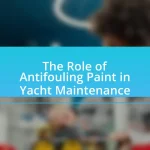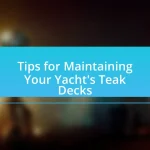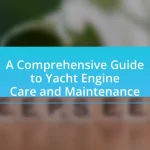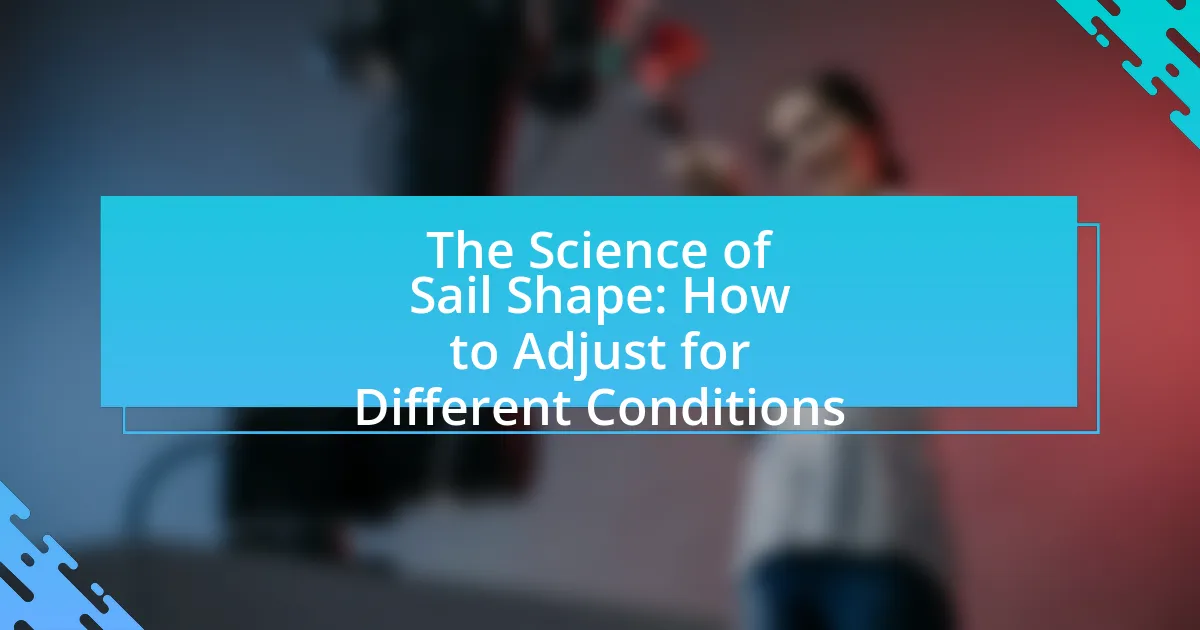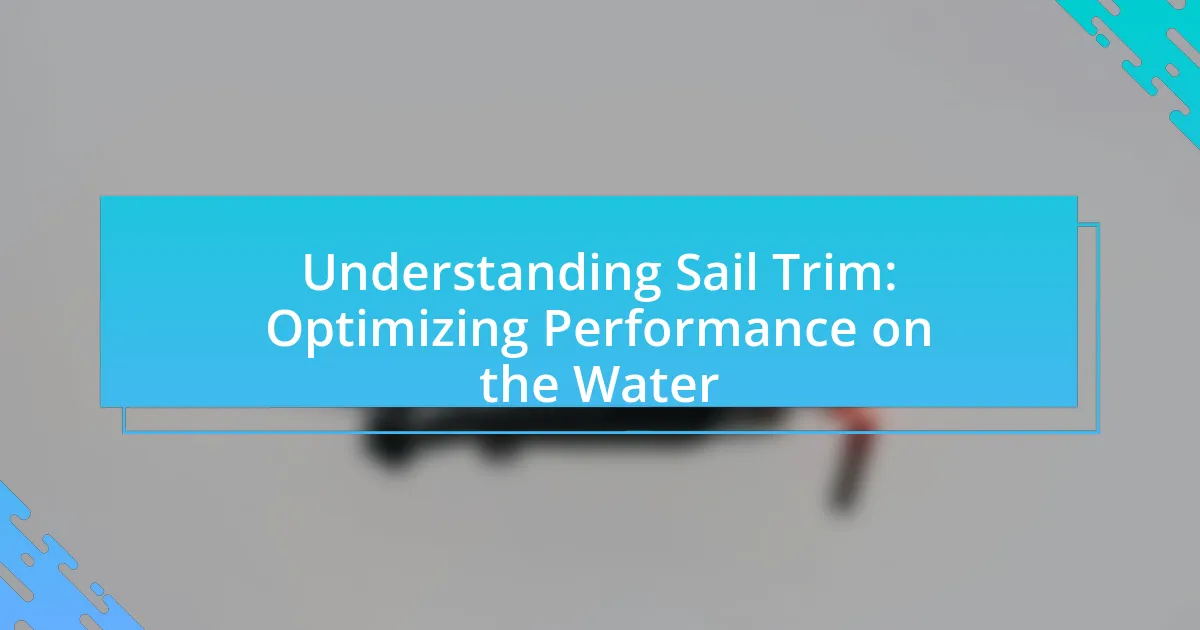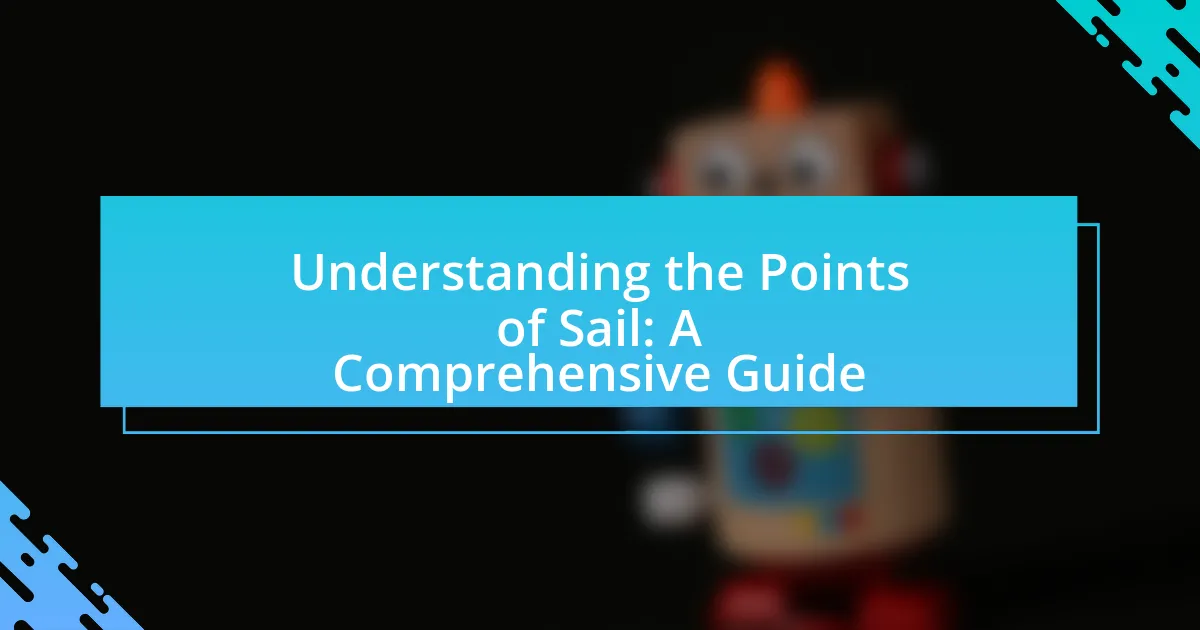Essential knots for yacht enthusiasts are critical for ensuring safety and efficiency while sailing. Key knots include the bowline, clove hitch, figure-eight knot, and sheet bend, each serving specific purposes such as securing lines, fastening ropes to posts, and preventing slippage. Understanding the importance of these knots enhances sailing performance and teamwork among crew members. Additionally, proper knot-tying techniques and regular practice are essential for mastering these skills, which can be further supported by various instructional resources available for learning.

What are Essential Knots for Yacht Enthusiasts?
Essential knots for yacht enthusiasts include the bowline, clove hitch, figure-eight knot, and sheet bend. The bowline creates a fixed loop at the end of a rope, making it ideal for securing lines. The clove hitch is useful for fastening a rope to a post or pole, providing a secure hold. The figure-eight knot is commonly used to prevent rope from slipping through a block or pulley. Lastly, the sheet bend is effective for joining two ropes of different diameters. Mastering these knots enhances safety and efficiency while sailing.
Why are knots important in yachting?
Knots are crucial in yachting because they ensure safety, control, and efficiency in handling sails and securing equipment. Properly tied knots prevent accidents by keeping lines secure, which is essential for maintaining stability and maneuverability on the water. For instance, the bowline knot creates a fixed loop at the end of a rope, making it ideal for securing mooring lines, while the clove hitch is effective for fastening lines to posts or rails. These knots are widely recognized in maritime practices, underscoring their importance in yachting operations.
What safety considerations are tied to knot usage?
Safety considerations tied to knot usage include ensuring the knot is appropriate for the specific application, as improper knots can lead to failure under load. For instance, using a bowline for securing a load can provide a reliable loop, while a square knot may slip under tension. Additionally, knots should be regularly inspected for wear and damage, as frayed or weakened lines can compromise safety. Proper knot tying techniques must be employed to avoid common mistakes, such as tying knots too loosely or incorrectly, which can result in accidents or equipment loss.
How do knots enhance sailing efficiency?
Knots enhance sailing efficiency by securing sails and rigging, which optimizes the boat’s performance and stability. Properly tied knots prevent slippage and ensure that sails maintain their shape, allowing for better wind capture and improved speed. For instance, the bowline knot creates a fixed loop that is essential for attaching sails to halyards, ensuring that the sail remains taut and effective in harnessing wind energy. Additionally, knots like the clove hitch secure lines to posts or masts, preventing movement that could disrupt sailing dynamics. These practices are vital for maintaining control and maximizing the vessel’s potential in various sailing conditions.
What types of knots should every yacht enthusiast know?
Every yacht enthusiast should know the bowline, cleat hitch, figure-eight knot, and double half-hitch. The bowline creates a fixed loop at the end of a rope, making it essential for securing lines. The cleat hitch is used to tie a line to a cleat, ensuring stability when docking. The figure-eight knot is a reliable stopper knot that prevents ropes from slipping through blocks or rings. The double half-hitch is effective for securing a line to a post or tree. Mastering these knots enhances safety and efficiency while sailing.
What is the purpose of a bowline knot?
The purpose of a bowline knot is to create a fixed loop at the end of a rope. This knot is widely used in sailing and other maritime activities because it is secure, easy to untie after being loaded, and does not slip. The bowline knot is essential for tasks such as securing a line to a cleat or creating a loop for towing, making it a fundamental knot for yacht enthusiasts. Its reliability and ease of use have made it a standard choice in various applications, including rescue operations and climbing.
How is a cleat hitch knot used in docking?
A cleat hitch knot is used in docking to secure a boat to a cleat, ensuring stability and safety while moored. This knot allows for easy adjustment and release, making it ideal for quick docking situations. The cleat hitch is formed by wrapping the line around the cleat and securing it with a series of figure-eight turns, which effectively holds the boat in place against wind and current. Its effectiveness is evidenced by its widespread use in boating practices, as it provides a reliable method for securing vessels in various docking scenarios.
How can learning knots improve your sailing experience?
Learning knots significantly enhances your sailing experience by providing essential skills for securing sails, managing lines, and ensuring safety on the water. Mastery of various knots, such as the bowline and cleat hitch, allows sailors to efficiently adjust sails and rigging, which is crucial for optimal performance and maneuverability. Additionally, knowing how to tie reliable knots can prevent accidents caused by loose lines or equipment failure, thereby increasing overall safety during sailing trips. Studies in sailing education emphasize that proficient knot-tying skills contribute to a sailor’s confidence and competence, ultimately leading to a more enjoyable and successful sailing experience.
What are the practical applications of essential knots?
Essential knots have practical applications in various maritime activities, including securing sails, mooring boats, and creating safety harnesses. For instance, the bowline knot is widely used to create a fixed loop at the end of a rope, making it essential for attaching lines to a boat or securing items on deck. The cleat hitch is another critical knot used for tying a boat to a dock, ensuring stability and safety during docking. Additionally, the figure-eight knot is employed in climbing and sailing to prevent rope slippage, providing security in high-stakes situations. These knots are fundamental for effective seamanship, enhancing safety and efficiency in yachting and other water-related activities.
How do knots contribute to teamwork on a yacht?
Knots contribute to teamwork on a yacht by facilitating effective communication and coordination among crew members. When crew members are proficient in tying specific knots, they can execute tasks such as securing sails, mooring the yacht, and managing lines more efficiently. This proficiency reduces the likelihood of errors and enhances safety, as each member understands their role and the importance of reliable knots in various sailing scenarios. For instance, the bowline knot is commonly used to create a fixed loop at the end of a line, allowing crew members to quickly and securely attach lines to cleats or other points, which is crucial during maneuvers. Thus, the ability to tie and utilize knots effectively fosters a collaborative environment, ensuring that all crew members can work together seamlessly to navigate and operate the yacht safely.
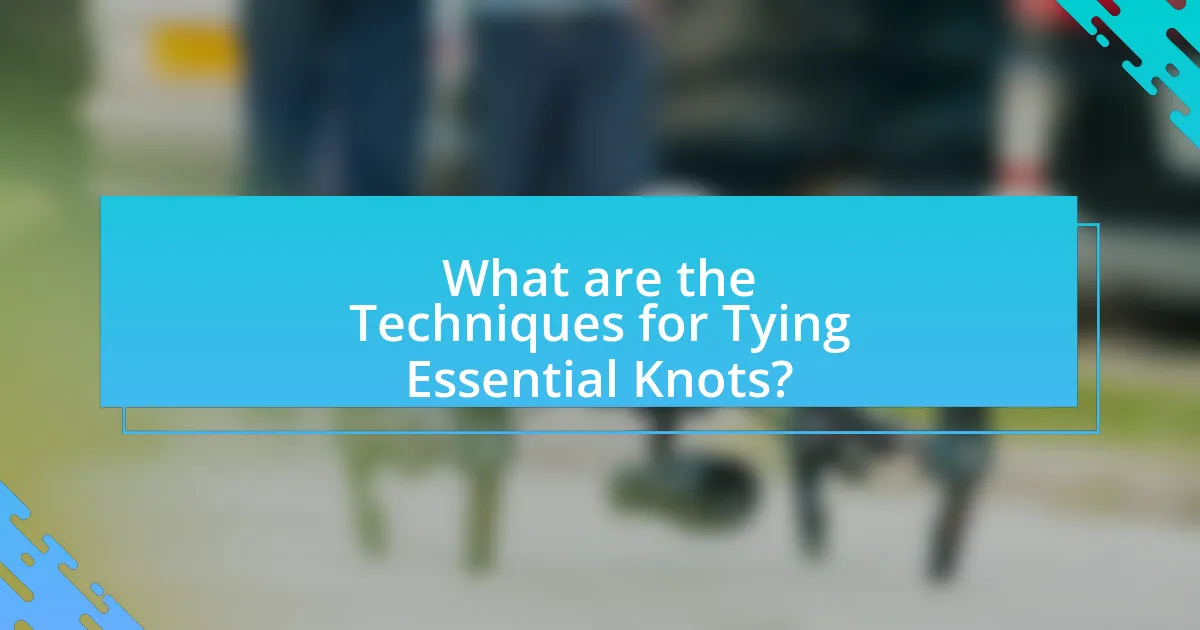
What are the Techniques for Tying Essential Knots?
The techniques for tying essential knots include the bowline, clove hitch, and figure-eight knot. The bowline creates a fixed loop at the end of a rope, which is crucial for securing lines to a mooring or a cleat. The clove hitch is effective for fastening a rope to a post or a rail, allowing for easy adjustments. The figure-eight knot is used to prevent the end of a rope from unraveling and is often employed in climbing and sailing. Mastery of these techniques is essential for yacht enthusiasts, as they enhance safety and efficiency on the water.
How do you tie a bowline knot correctly?
To tie a bowline knot correctly, create a small loop in the rope, pass the working end through the loop from underneath, wrap it around the standing part of the rope, and then bring it back down through the loop. This knot forms a fixed loop at the end of the rope, which is secure and easy to untie after use. The bowline knot is widely recognized for its reliability in various applications, including sailing and climbing, due to its ability to maintain strength under load while remaining easy to untie.
What steps are involved in tying a bowline knot?
To tie a bowline knot, follow these steps: First, create a small loop in the rope, leaving a long end for the working part. Next, pass the working end of the rope through the loop from underneath. Then, bring the working end around the standing part of the rope. Finally, pass the working end back down through the loop and pull both ends to tighten the knot. The bowline knot is known for creating a fixed loop at the end of a rope, which is secure and easy to untie after use.
What common mistakes should be avoided when tying a bowline knot?
Common mistakes to avoid when tying a bowline knot include failing to create a proper loop, which can lead to an insecure knot, and not ensuring that the working end is threaded correctly through the loop, resulting in a knot that may slip. Additionally, neglecting to dress the knot properly can cause it to jam or become difficult to untie. Properly forming the initial loop and threading the working end through it are critical steps that must be executed correctly to ensure the knot’s reliability.
What is the process for tying a cleat hitch knot?
To tie a cleat hitch knot, first, position the rope over the cleat, ensuring it crosses the base. Next, wrap the rope around one side of the cleat, then bring it back across the top and wrap it around the opposite side. Finally, tuck the end of the rope under the last wrap and pull tight to secure the knot. This method is effective for securing a line to a cleat, commonly used in boating and sailing, as it allows for easy adjustments and release.
What are the key steps in securing a cleat hitch knot?
To secure a cleat hitch knot, first, wrap the line around the base of the cleat, moving from the back to the front. Next, make a figure-eight pattern by crossing the line over itself and wrapping it around the opposite side of the cleat. Finally, finish by tucking the end of the line under the last wrap to ensure it holds firmly. This method is effective because it creates a secure hold that can withstand tension, making it ideal for securing boats.
How can you ensure a cleat hitch knot holds under pressure?
To ensure a cleat hitch knot holds under pressure, it is crucial to wrap the line around the cleat properly and secure it with sufficient tension. The knot should be formed by making at least two turns around the cleat’s horns, followed by a figure-eight pattern to lock it in place. This method increases friction and stability, preventing slippage. Additionally, using a line that is appropriate for the load and ensuring that the cleat is suitable for the knot type further enhances its reliability under pressure. Properly executed, a cleat hitch can withstand significant force, making it a preferred choice in marine applications.
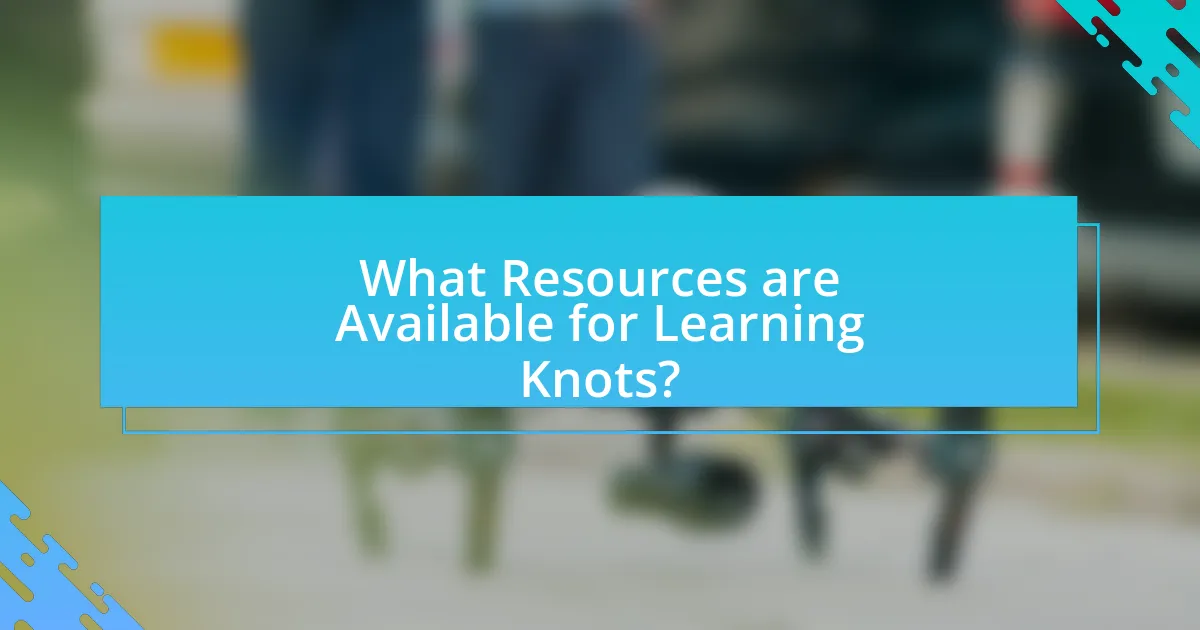
What Resources are Available for Learning Knots?
Resources available for learning knots include instructional books, online tutorials, and mobile applications. Books such as “The Ultimate Book of Knots” by Geoffrey Budworth provide comprehensive guides with illustrations and step-by-step instructions. Online platforms like YouTube feature numerous video tutorials that visually demonstrate knot-tying techniques, making it easier for learners to grasp the concepts. Additionally, mobile apps like “Knots 3D” offer interactive 3D models of knots, allowing users to practice virtually. These resources collectively enhance the learning experience by providing various formats to suit different learning preferences.
Where can you find instructional materials for knot tying?
You can find instructional materials for knot tying in various resources such as books, online tutorials, and instructional videos. Books like “The Ultimate Book of Knots” by Peter Owen provide detailed illustrations and descriptions of various knots. Online platforms such as YouTube host numerous channels dedicated to knot tying, offering step-by-step visual guides. Websites like Animated Knots by Grog provide interactive animations that demonstrate how to tie different knots, making it easier for learners to grasp the techniques. These resources collectively offer comprehensive guidance for mastering knot tying essential for yacht enthusiasts.
What online resources offer video tutorials for essential knots?
YouTube is a primary online resource that offers a wide range of video tutorials for essential knots. Channels such as “The Knotty Boys” and “Sailing La Vagabonde” provide detailed demonstrations on various knot-tying techniques, catering specifically to yacht enthusiasts. Additionally, websites like Animated Knots and Knot Guide feature instructional videos that visually explain the process of tying essential knots, ensuring clarity and ease of understanding for users.
How can books enhance your understanding of knot tying?
Books can enhance your understanding of knot tying by providing detailed illustrations, step-by-step instructions, and historical context for various knots. These resources often include visual aids that clarify the intricacies of knot formation, making it easier for readers to grasp complex techniques. For instance, books like “The Ashley Book of Knots” by Clifford W. Ashley offer over 3,800 knots with comprehensive descriptions and diagrams, which serve as a valuable reference for both beginners and experienced knot tiers. Additionally, books can present the practical applications of knots in sailing, climbing, and fishing, reinforcing the importance of each knot’s purpose and usage. This combination of visual learning and contextual information solidifies a reader’s ability to effectively tie and utilize knots in real-world scenarios.
What tips can help you master knot tying?
To master knot tying, practice consistently and focus on understanding the purpose of each knot. Regular practice helps reinforce muscle memory, while knowing the specific applications of knots, such as the bowline for securing lines or the clove hitch for attaching a rope to a post, enhances your ability to choose the right knot for various situations. Additionally, using visual aids like diagrams or videos can clarify complex knots, making them easier to learn. Studies show that hands-on practice combined with visual learning significantly improves skill acquisition in manual tasks, including knot tying.
How can practice improve your knot tying skills?
Practice enhances knot tying skills by reinforcing muscle memory and improving technique. Repeatedly tying knots allows individuals to develop familiarity with the movements and patterns required for each knot, leading to increased speed and accuracy. Studies in motor skill acquisition indicate that consistent practice can lead to significant improvements in performance, as evidenced by research published in the Journal of Experimental Psychology, which shows that deliberate practice can enhance skill proficiency over time. Therefore, engaging in regular knot tying practice is essential for mastering the various knots necessary for yachting.
What are some common troubleshooting tips for knot tying?
Common troubleshooting tips for knot tying include ensuring the rope is not twisted, as twists can lead to weak knots. Additionally, always moisten the rope before tightening the knot to reduce friction and allow for a more secure hold. It’s also important to practice the knot multiple times to become familiar with the technique, which can help identify any potential issues. Lastly, double-check the knot after tying to confirm it is secure and properly formed, as loose knots can lead to failure during use.

